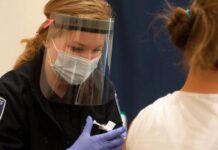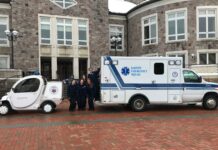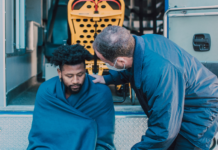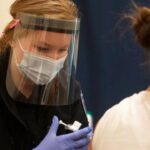
Being part of a volunteer college EMS agency comes with its perks and its setbacks. It is rewarding to give back to a community that you belong to and know intimately because it makes your work more meaningful. However, depending upon whether your agency is part of a student government association (SGA), a campus police/safety program, or is completely independent, funding can quickly become an issue. This was the situation for my agency at Skidmore College in Saratoga Springs, NY. Currently, Skidmore College EMS (SCEMS) is a five-year-old agency on a small campus that receives funding from the Skidmore SGA. All of the members volunteer their time to run the agency and staff shifts. In the spring of 2017, we were a young agency with great ambitions: we wanted more advanced training equipment (such as a simulation mannequin) and, in the long term, an ambulance. Because these were not expenses that the Skidmore SGA could cover, we took matters into our own hands. SCEMS ran a very successful fundraising campaign using our school and community resources.
Despite an initial goal of $5,000, we ultimately raised over $18,000, surpassing our goal and raising nearly two-thirds of the yearly operating budget in less than one semester. Do you want to do the same for your collegiate EMS agency? Here are five tips for how to successfully mobilize members and raise money for your campus EMS agency:
1. Set priorities and goals.
The SCEMS leadership team, comprised of supervisors and officers, sat down and made a wish list. We researched costs and prioritized short-term goals versus long-term goals. We set up a task force to work on the planning for our long-term goal (an ambulance) and then researched ways to meet our short term needs: more training equipment, textbooks, radios, pagers, medications, and access to a simulation mannequin. These planning steps were essential to our fundraising because they allowed us to reach out to our community resources for help first, before setting monetary goals.
2. Reach out to other EMS agencies in your community.
We first reached out to Wilton EMS and Saratoga Springs Fire Department (SSFD). Wilton EMS offered to lend us their simulation mannequin for trainings, which was a good start in gaining access to a great (and expensive) piece of training technology. The chief and deputy directors of SSFD then gave us extra oxygen tubing, glucose, equipment bags, and other miscellaneous items they no longer needed. By the time we left the meeting, my car (an SUV) was full of generous donations for SCEMS – an amazing and unexpected outcome. SSFD granted us access to their equipment discounts, through Henry Schein and Bound Tree Medical, and offered for members of SCEMS to join them for trainings and ride alongs at no cost and to gain CMEs. This was an invaluable offer that came from one email and a brief meeting with an agency that we worked with on a regular basis.
3. Reach out to resources on your campus.
It was necessary to arrange a meeting with leadership at Skidmore who could inform us about fundraising policies specific to our school because this dictated how we could or could not raise money. We met with the SGA staff manager, the business office that controlled our funding, and our school’s Office of Advancement. At Skidmore, the Office of Advancement is in charge of keeping alumni in contact with the school, building relationships with community members, and putting together special events and opportunities that fulfill the college’s educational mission and strategic plan. One of their main objectives is to fundraise so they were an invaluable resource to us as we formulated our campaign. In addition to providing an online platform to ultimately launch our social media campaign, the advancement team helped us come up with a concept paper and craft a letter to send to alumni and parents of current SCEMS members.
Partnering with the Office of Advancement was key to our success because the advancement team knew how to properly word the letter and appropriately reach out to members. Ultimately, the advancement team ensured all the donations were processed according to the college’s guidelines. This way, the money was not going directly into our hands, but rather through an established department at the college.
4. Get your entire agency involved.
We learned that if only your leadership is dedicated to fundraising, you will not generate the camaraderie, excitement and attention needed to reach your goal. At SCEMS we revealed the fundraising campaign at our general member meeting and via email, and received an outpouring of responses from members who had not contributed to the agency before. Making the campaign an important part of the agency’s culture is not just important to reaching your monetary goal, but also to identifying the members who are willing to go out of their way to help. This can easily result in people self-selecting as future agency leaders and creating a stronger community from everyone working together towards a common goal.
5. Be creative.
This may be the most important part of the entire fundraising campaign. We learned that if you involve enough people and begin collaborating, this process can happen organically. SCEMS members set up tables around campus with computers and shared the link to the campaign on class pages, club pages, and with their families and friends outside of the Skidmore community. One of the creative ideas was a challenge created in the first few days of the campaign: if we reached 100 donors by the end of the first week, our EMS director would wear a cowboy hat on-call for the following month. This generated a social media outpouring of memes and announcements that ultimately led to more than 100 donors in the first five days of the online campaign. Since we were not allowed to provide gifts or a direct service to the people that donated (based upon our college administration’s guidelines), hosting the challenge was a fun way to grab the school’s attention and reach our goal.
Final Thoughts
I am happy to say that this was a very rewarding experience and was a wonderful way for me to leave SCEMS. The support came from everywhere: family and friends, restaurants I followed on Facebook, local EMS agencies, professors, community members, and strangers. Every donation mattered because it was not about the money but, rather, about creating community and raising awareness for SCEMS. I highly recommend starting a campaign and improving the future of your college’s agency today – I promise the hard work is worth it.











